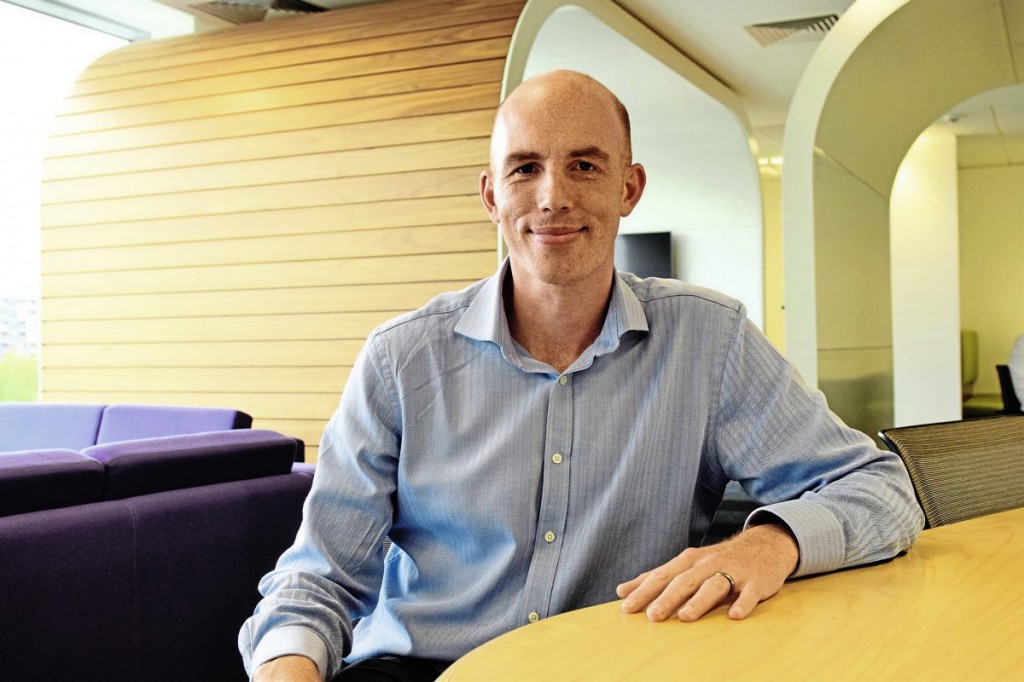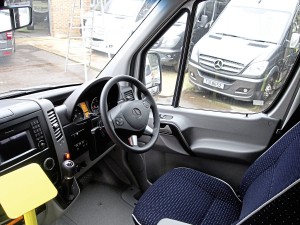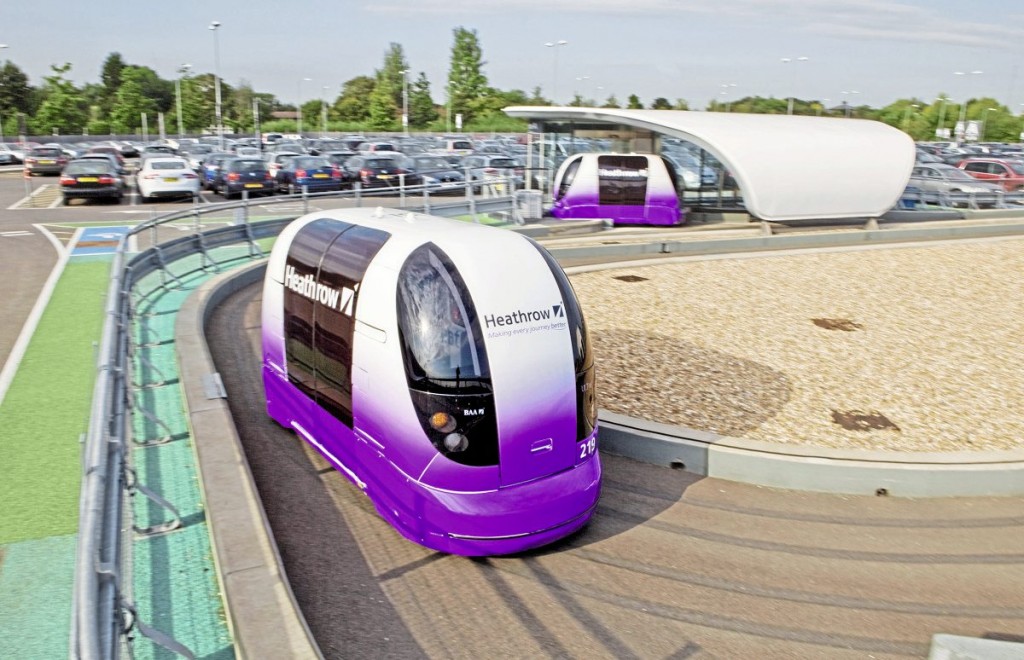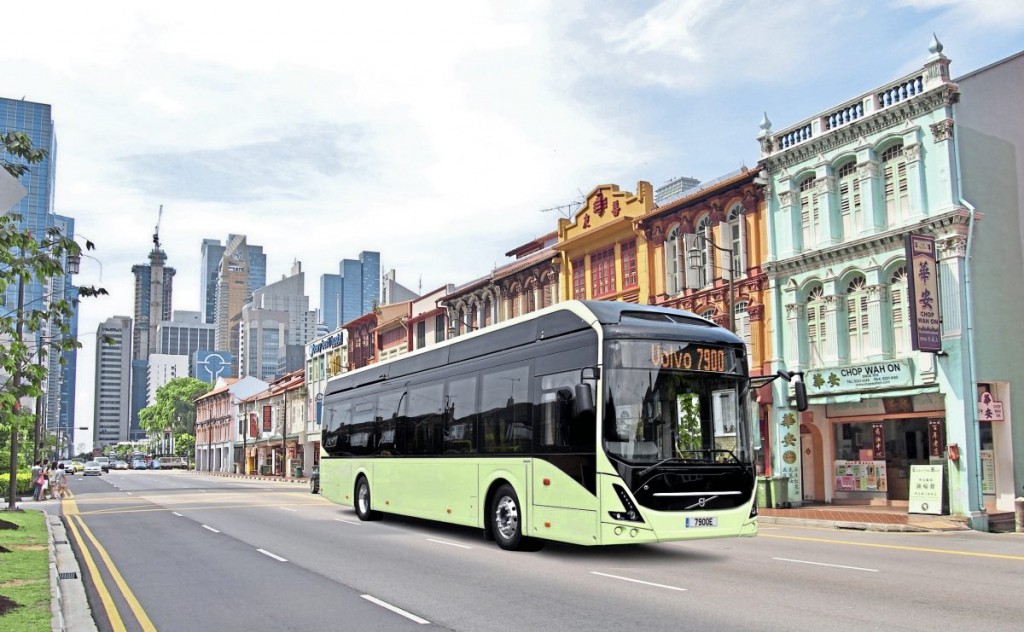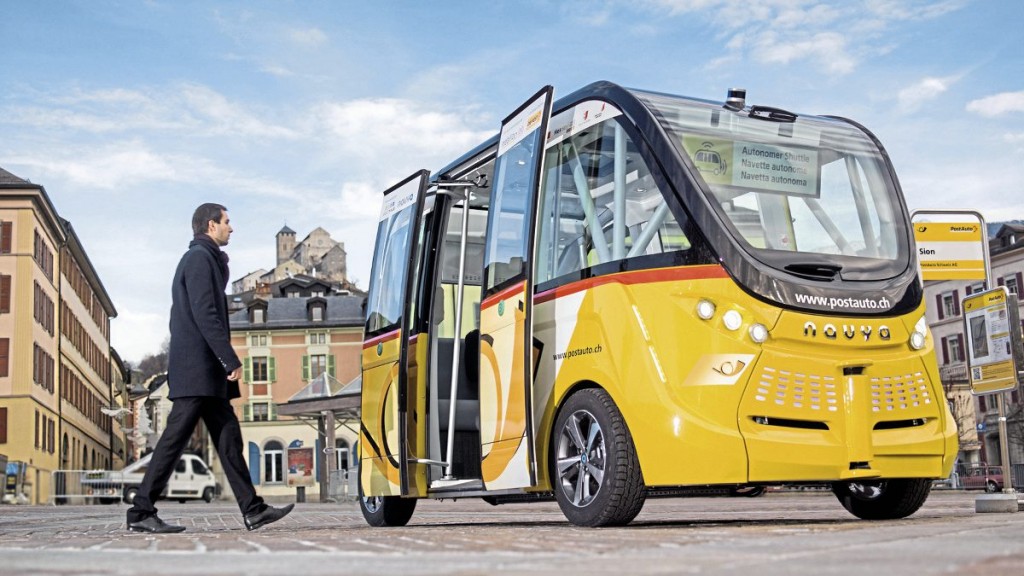Autonomous vehicles on the horizon
Are we heading towards driver-free buses and coaches?
Some may think autonomous vehicles are science fiction and it is fair to say they are a long way from being rolled out fully in commercial fleets.
However, there is some serious research being carried out into them. For instance, RDM Group has secured funding to lead a project that is looking to alleviate congestion in Cambridge using these vehicles. The Coventry-based autonomous vehicle specialist is working with Cambridgeshire County Council and Wellcome Genome Campus to deliver a £250,000 feasibility study, looking into the business case for a future £3m to £5m self-driving shuttle service.
The scheme is to utilise RMD Group’s existing four- and eight-seater Pod Zero, as well as looking at the case for designing and manufacturing larger shuttles of up to 15 seats if demand dictates. Part of the study includes running at the guided busway at Trumpington Park.
“Bus and coach operators should be interested in autonomous vehicles,” said Senior Technologist at the Transport Systems Catapult, Alan Nettleton. “I think operators should be thinking about this technology, if not already planning their business for it.”
Alan joined the Transport Systems Catapult, a body set up to drive new and emerging technologies in transport, four years ago. His background is in transport planning and throughout his time there he has been involved in autonomous vehicle projects. “I think what it will come down to is one of two ways to do driverless vehicles: either developing them to be extremely complicated to deal with everything that they come up against on the roads or to make the environment they operate in as simple as possible.”
He notes there are some autonomous passenger vehicles in successful operation already, including the Heathrow POD service, which runs on its own pathway. “This is a good example of an autonomous system in operation. People get on it without really realising it is an autonomous vehicle. We have come a long way but there is still a long way to go until they are operating in mixed traffic.”
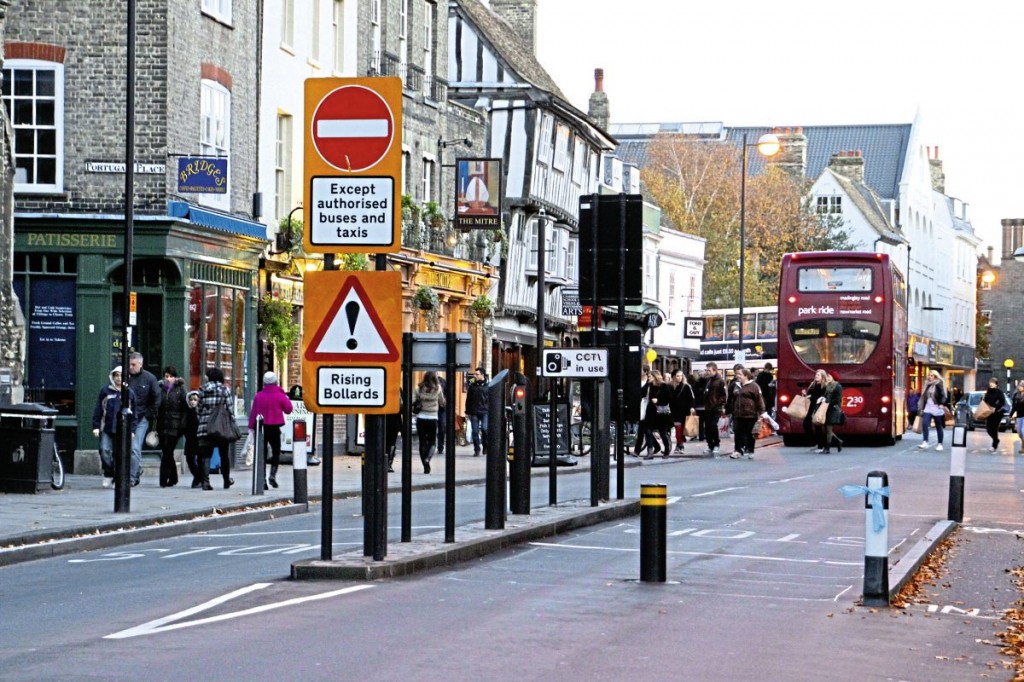
The real test of an autonomous PSV would be whether it can handle running in a busy environment such as a town centre, such as this
When it comes to automated buses, he believes this could switch services to be more akin to demand responsive transport (DRT). He envisions a conventional route having its bus exchanged with several autonomous pods. These could be hailed by the passenger via a mobile phone or they could be available on the street, waiting for customers. Taking smaller numbers of passengers means the vehicle need not go to so many stops, taking a more direct path. He believes this would reduce waiting times and speed up journeys.
“If you don’t need a driver, you can just leave the vehicle out on the network. It enables a more flexible operation. The only time it would come back to the depot is for cleaning, maintenance and refuelling; so there are operational advantages of them too.”
Technological challenge
Although Alan is positive about the roll out of autonomous vehicles in bus and coach fleets, he is aware there are technological challenges to overcome before this becomes a reality. “When it comes to autonomous vehicles navigating through a complicated environment, there are a lot of unanswered questions on how it will deal with the situation. So, on a residential road with cars parked on the side and a driver in front flashes their headlights for the vehicle to pass through a gap where only a single vehicle can get down, how will it deal with that? Any situations where there is human interaction could prove problematic. Also, weather conditions; fog, snow, bright sunlight. There are a lot of things that humans deal with that machines can’t.”
Because of this, Alan believes a busway is a good place for autonomous PSVs to start in public service. “They won’t scale up as quickly as the hype surrounding them might suggest. I think operators should definitely be looking into it though. They need to be starting to plan for this, to be proactive and gain an advantage.”
As well as the technology itself, another factor holding up rolling this technology out is licencing issues: “Would this new vehicle be considered a passenger service vehicle or a private hire? It doesn’t fit the current regulations.”
Also, in the event of an accident involving these vehicles, where does the blame lie for insurance purposes? Alan said: “Insurance companies are getting heavily involved in research projects on this now. The general consensus is they are moving away from driver insurance to product liability insurance. If one is involved in an accident, then a similar investigation will take place as currently happens to find out who was at fault. On the positive side, these vehicles will collect a lot of information, making it possible to diagnose issues that have occurred.”
There is of course the downside of not having a driver onboard, in that there is no one there to assist passengers. Alan said: “I don’t think it will be one size fits all. Some services won’t have a member of staff onboard. In a larger city, you could provide remote support from a two-way communication system of some kind, linking back to support staff in an office. Or you could have someone available at stops.”
Passenger concerns are worth noting too. Alan said: “I think that, among members of the public, the lack of control over the vehicle is a concern. From the survey work I’ve seen, a high proportion of people say they will be nervous when using these vehicles. You have got to take this research with a pinch of salt though because the questions are often vague. You have to put it into context, you can’t compare something like the Heathrow PODs to a vehicle operating at 70mph in mixed traffic.”
“There have been a number of early-adopter cases of automated buses at lower speeds. Hopefully if the technology develops enough, we can have fixed routes through town that supplement or replace standard-bus routes.” However, before it can get to this stage, we need to work out at which point enough research has been done into how safe they are. Alan said: “Verification of validation is a problem. How do we know if the vehicle is safe enough to be let loose? At what point do we say that’s safe enough and we sell to the public?
“When you look at statistics from Google’s trials, they seem to have done pretty well, but it’s not just a computer driving, there’s a human to take over if there is any doubt. There were quite a few rear-end shunts though, which might be because the autonomous vehicle stops when the driver behind it does not expect it to.”
Initial research projects tend to be on car or shuttle-sized vehicles, but Alan said there will be a need for larger vehicles. He said: “I would suggest it’s more of a question for transport planning. If you’re taking the driver out, then there is no reason you can’t go for a larger number of smaller vehicles. But a larger vehicle might make sense in built-up areas.”
Alan highlighted the importance of governmental assistance for the roll-out of these vehicles. “It’s really so reliant on local authority support. There is certainly a lot of ‘wait and see’ involved with this as well; not everybody wants to jump in and be the first.”
The UK has a lot of government support for autonomous vehicles, according to Alan. “Where the country does struggle is we don’t have many tier one suppliers for autonomous vehicles. A lot of that work is going on in Germany.”
Autonomous takeover?
So, does Alan believe the autonomous bus will replace the manually operated version? “I think it will eventually, the question is the time scale. Is it going to be five or ten years? Certainly not. Within 30 years? That’s a far more difficult question to answer.”
Andy Campbell’s view
Stagecoach East MD, Andy Campbell, has considered the usefulness of autonomous vehicles. He said: “If you’re talking about getting to the situation where buses are totally driverless, I think we are a long way off achieving that.
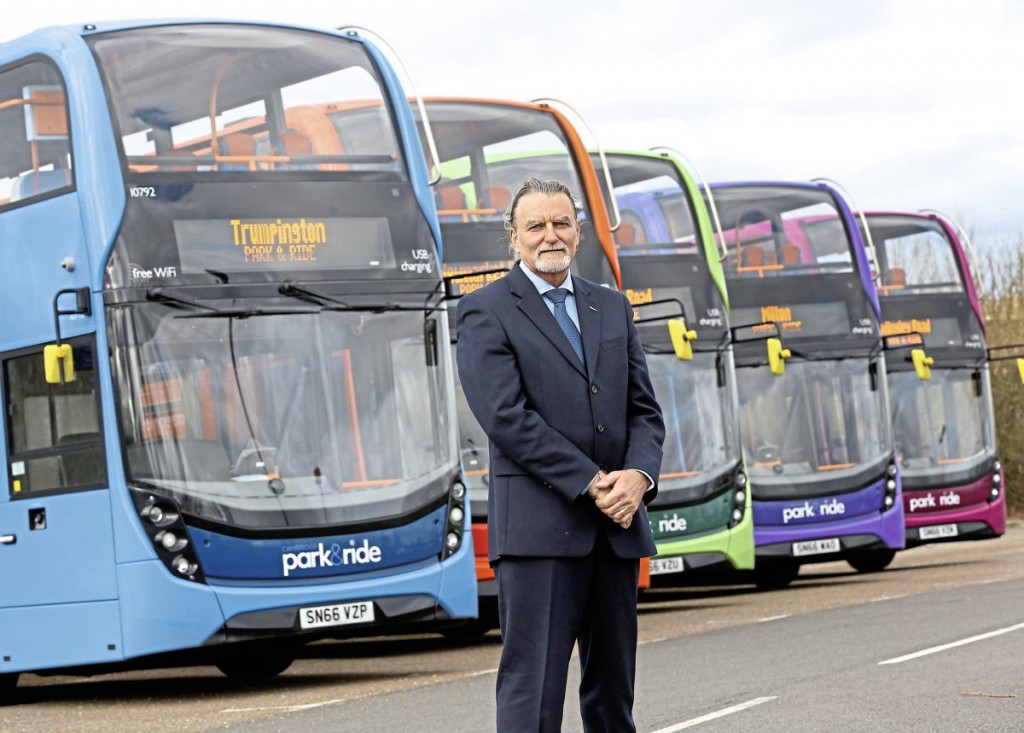
Andy Campbell – “The biggest hurdle of rolling this technology out further is gaining customer confidence that it is safe”
“There is a cost saving there,” he said, referring to the fact a driver would not have to be paid. “It would be good if we did make a cost saving, we could reduce fares.”
He does have some apprehensions though: “Safety is my biggest concern, I wouldn’t rush headlong into it. Trials have been done that I have read about and there have been some issues with autonomous cars.” He referred to a recent accident involving an autonomous shuttle in Las Vegas. According to press reports, a truck reversed into the vehicle, which came to a halt to avoid colliding with the lorry but did not move out of the way as it backed into it. The accident happened during the first day of the shuttle entering service.
Does Andy think autonomous vehicle technology is viable in the bus and coach market? “Depending on the cost of the vehicle and the technology, I think it is viable. You would have to be 100% sure with their safety though. I would say we are some distance away in terms of using this technology on PSVs. I can see the advantage in terms of HGVs, maybe with one driver onboard. This will probably come before passenger transport though. And the autonomous car still needs to be proven. It will probably come in stages, similar to how cars are developing with automatic braking systems (ABS) and advanced driver assistance systems. It will probably come in bite-size chunks. There is an element of risk if you take too much off the driver in one go.
“The biggest hurdle of rolling this technology out further is gaining customer confidence that it is safe.” He considered the fact many trains run automatically already: “I’m not knocking light rail, but on a track you feel a bit more secure. Professional PSV drivers have people coming at them from all directions. You would need to have a system that deals with that.”
If this technology was introduced in the industry, where would it be rolled out? “That’s a good question. If our busway was just purely a busway and the buses weren’t going onto roads for part of it around St Ives and Huntingdon, it might be good on that. I would suggest we would probably see the first on private roads, around hospitals and airports.”
Andy is confident the industry could well be heading towards autonomous vehicles, saying: “I think they will get there eventually, not in my career, but I’m sure they will get there.”
Volvo trialling autonomous electric buses in Singapore
Volvo Buses and Nanyang Technological University (NTU) in Singapore have signed a cooperation agreement on a research and development program for autonomous electric buses. For Volvo this will be the first autonomous application in public transportation. The manufacturer has already used autonomous technology in mining, quarry and refuse collection operations. The basis of the program consists of two all-electric 12m Volvo 7900 Electric buses. Volvo and NTU will build the autonomous driving solution on Volvo’s platform.
President Volvo Buses, Hakan Agnevall, said: “We are seeing fast-growing interest in both autonomous and electric vehicles in cities all over the world. Together with NTU, one of the world’s leading universities of technology, we now have the possibility of testing various solutions under realistic conditions in a major city that has high ambitions for its public transport.”
First steps into autonomous buses
One operator taking particular interest in autonomous vehicles is FirstGroup. Its US operation, First Transit, has launched the first autonomous vehicle (AV) passenger shuttle pilot in North America. First Transit, in partnership with EasyMile, is piloting the AV passenger shuttle at the Bishop Ranch Office Park in San Ramon, California. It connects tenants to multiple transit options including bus, bike and car-sharing services. First Transit is responsible for providing staffing, maintenance, insurance and operational support for two shuttles during the testing and deployment phases of the program.
The pilot will begin with two vehicles, each with a customer service agent onboard for passenger questions and information. They can carry 12 passengers and can operate for 14 hours on a battery charge. First Transit is also providing onsite personnel to provide maintenance for the AV passenger shuttles at a facility provided by EasyMile.
First Transit has also implemented AV passenger shuttles at the Arlington Convention and Visitors Bureau (ACVB) in Arlington, Texas.
Navya
Visitors to Busworld in Kortrijk last year may have seen or even had a ride on the Navya autonomous shuttle. Navya is a French company specialising in developing driverless, automated and electric vehicles that are designed for the intelligent transport of people and goods on the first and last mile. Its autonomous shuttle, demonstrated in Busworld’s car park, has been designed with navigation and safety functions in particular to mind. Lidars, cameras, GPS and odometry enable the vehicle to position itself and to identify obstacles on the road or signage in both daylight and at night time.
Specifications
Passengers: 15 (11 seated and four standing)
Length: 4.75m
Width: 2.11m
Height: 2.65m
Empty weight: 2,400kg
Engine: Electric
Power: 15kW
Max speed: 45 km/h (28mph)
Safety features: Handholds (x4), supporting bars (x2), Emergency hammer (x1), Safety Pack (triangle, safety vest and first aid kit), fire extinguisher and interior camera
